| Reviews & Columns |
|
Reviews DVD TV on DVD Blu-ray 4K UHD International DVDs In Theaters Reviews by Studio Video Games Features Collector Series DVDs Easter Egg Database Interviews DVD Talk Radio Feature Articles Columns Anime Talk DVD Savant Horror DVDs The M.O.D. Squad Art House HD Talk Silent DVD
|
DVD Talk Forum |
|
|
| Resources |
|
DVD Price Search Customer Service #'s RCE Info Links |
|
Columns
|
|
|
Gog
MGM // Unrated // December 6, 2011
List Price: $19.98 [Buy now and save at Amazon]
The Movie:
In 1953 producer Ivan Tors gave us the underrated SF film The Magnetic Monster which introduced the OSI, a government organization that was in charge of all things scientific. The following year he made a sequel of sorts, Gog. This film also featured an agent from the OSI investigating some mysterious occurrences but Tors was able to avoid the major misstep of the first film: this one is much more visually interesting. Too bad it's not nearly as exciting and way too talky. Even so, this MGM Limited Edition MOD disc is great and goes well with Tors earlier film and they make a great pair.
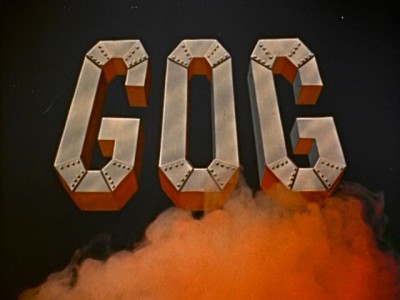
At a top secret scientific research station, deep underground beneath the southwest desert soil, scientists are dying under mysterious circumstances. The head of the installation suspects that there is a saboteur in their midst and calls in brilliant scientist/man of action Dr. David Sheppard (Richard Egan) from the Office of Scientific Investigation (O.S.I.).
The group naturally has a peaceful mission (what else would they be doing hidden hundreds of feet under the desert): to construct a space station that will take mankind to the stars. The first scientists were killed in their own deep-freeze chamber, frozen and then broken into a million pieces (off camera of course) when they fell. Soon after the deaths, a pair of hypersonic relays was discovered hidden in the base, the type of device that could signal the installation's location to a bomb-laden enemy plane and lead it right to the scientists.
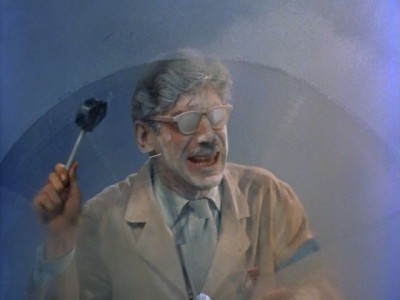
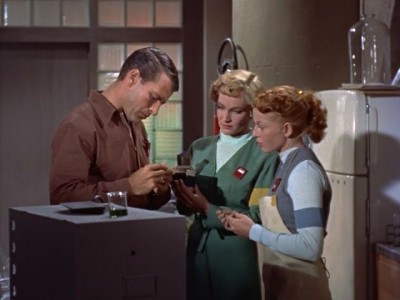
The bulk of the movie is taken up with Dr. Sheppard touring the base. He meets all of the major scientists who take time to explain their research, tell him why it's important for a space station and they then discuss the practical applications. Then he's treated to a demonstration before moving on to the next laboratory where the long process repeats. He sees the room where zero gravity can be simulated, the work on solar power, the nuclear reactor that powers the lab along with the giant computer that controls everything in the base, Nuclear Operated Variable Automatic Computers or NOVAC for short, and its two remote controlled robots, Gog and Magog.
After a while (a long while) the scientists start dying again. Controls start operating themselves, the centrifuge that's used to mimic the high gravity effects of a rocket blast won't turn off and kills a pair of subjects, a solar mirror turns itself on and aims its metal-melting beam at a scientist, and tuning forks start to vibrate with enough energy to kill (yeah, I didn't really get that one either). Then, Gog and Magog run wild. Who could be behind these deadly deeds? The arrogant scientist who thinks he's smarter than everyone else? The jealous female scientist? Or could it possibly be, gee, I don't know, the computer that controls all of the devices that viewers see operating automatically?
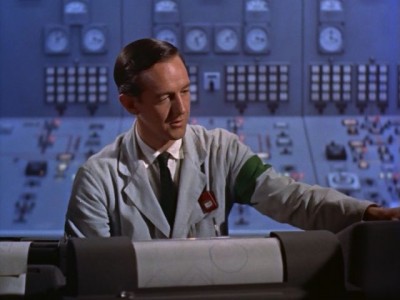
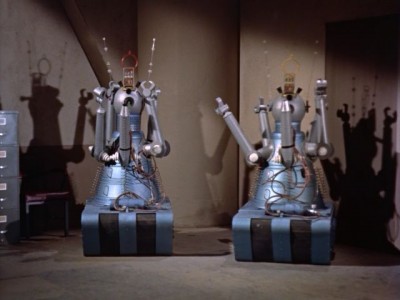
While the idea for the film is very good and the end is entertaining, there are some flaws that keep this from being a really memorable film. The biggest defect is the fact that there's just too much exposition in the first two thirds. The concept of breaking the movie up by having science demonstrations every few minutes is nice but the execution was less than perfect. The explanations that preceded these flourishes are just too long as are the demonstrations themselves. The zero-g environment, for example, has a scientist explaining how his two subjects are wearing special metal-meshed clothing and that there is a current running through wires in the ceiling and floors. By controlling the amount of current he can simulate different gravitational forces. So he has the two acrobats go through a routine three times, at normal gravity, half gravity, and one hundredth gravity. Obviously using wires, the woman lifts the man the last time through. *yawn* It isn't that visually interesting and the preamble makes the whole scene feel like a lecture in a science class.
While the screenwriter does try to keep the science more or less plausible, he doesn't spend as much time as he should worrying about the details of the plot. While the film tries to generate a sense of mystery over who is killing the scientist, it's painfully obvious who is responsible right from the beginning since viewers see the various machines acting on their own. What's just as bad is the fact that several mysteries are never explained in the movie. (How did the relays get planted all over the base? How did the radioactive element get planted in the chemist's lab?)
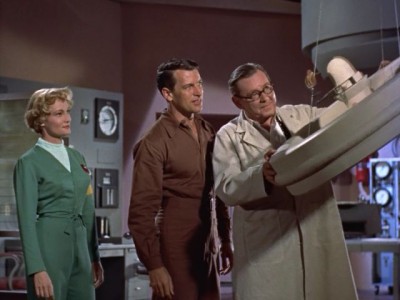
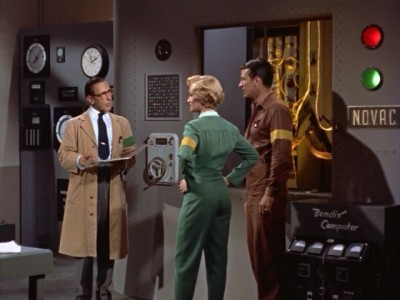
Even with these flaws, the movie does aim higher than most SF films of the era and it deserves a lot of credit for that. Trying to create a realistic science fiction film is laudable, and having a scientist whose main weapon is his brain (well, that and a flame thrower) is great.
It's not all dry science either. The third act is pretty exciting, and some of the earlier scenes are well done too. The robot designs for Gog and Magog are excellent. Just about all of the robots in sci fi films up to this point in time (and for decades afterwards) have been obviously men in suits: Humanoid in form and walking upright. This movie puts the robots on treads and instead of two arms they have several mechanical appendages placed all around its body. They look much more like Daleks (which wouldn't make an appearance for over a decade) than Tobor. Kudos to the design team for actually designing a robot instead of a suit for a man.
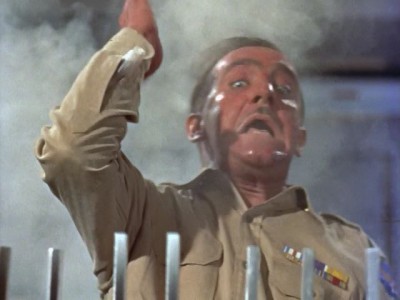
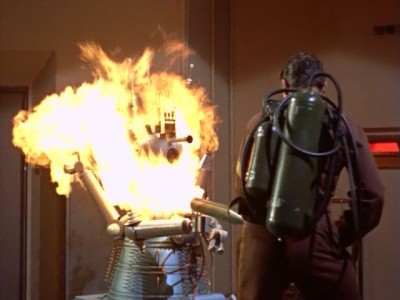
The DVD:
Audio:
The mono soundtrack is fine. There isn't any background noise or distortion and the dialog is easy to hear. Just what you'd expect from an early 50's film.
Video:
Originally shot in 3D, the film's color elements were thought lost for years and the movie was shown on the late, late show on TV in black and white for years. Luckily a color version recently turned up and that's what we have here. What's even better is that the unrestored full frame image looks great. I was expecting faded colors and a scratchy, soft, print but that's not the case at all. The print is clean and clear and the colors are bright and bold. The level of detail is very good and the image pretty sharp. This is a nice looking disc marred only by some grain in a few scenes.
Extras:
Unfortunately there aren't any extras.
Final Thoughts:
A film that aims high but doesn't quite hit the mark, Gog is a bit too talky in the beginning, but mostly makes up for it with the ending and some interesting robots. An attempt at a realistic SF film long before such things would become fashionable; Gog is definitely worth checking out. Recommended.
|
| Popular Reviews |
| Sponsored Links |
|
|
| Sponsored Links |
|
|
| Release List | Reviews | Shop | Newsletter | Forum | DVD Giveaways | Blu-Ray | Advertise |
|
Copyright 2024 DVDTalk.com All Rights Reserved. Legal Info, Privacy Policy, Terms of Use,
Manage Preferences,
Your Privacy Choices | |||||||















